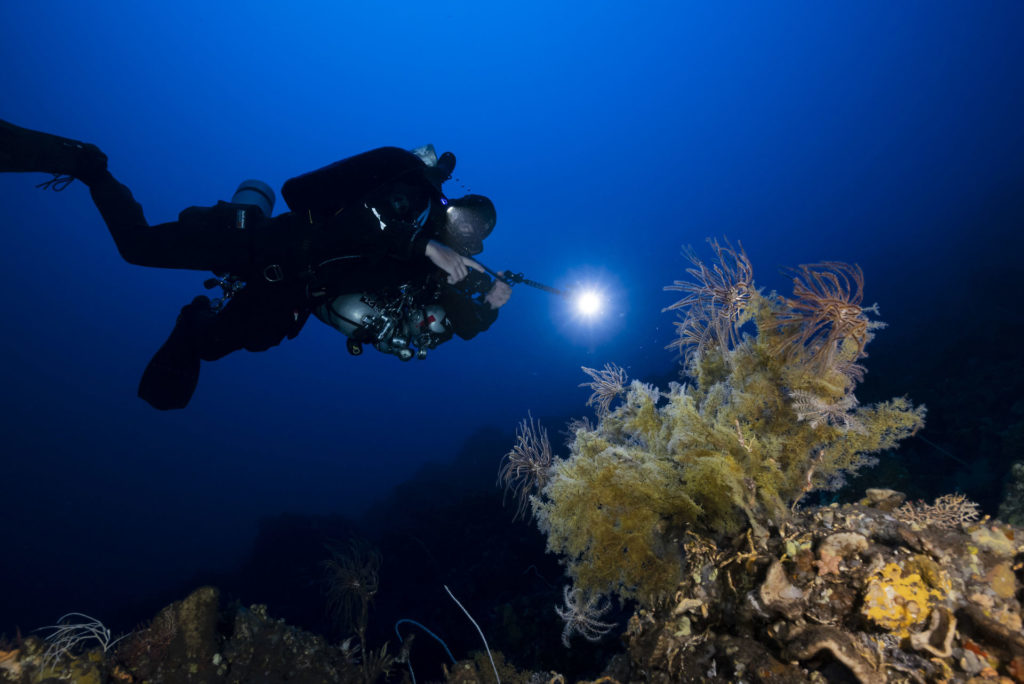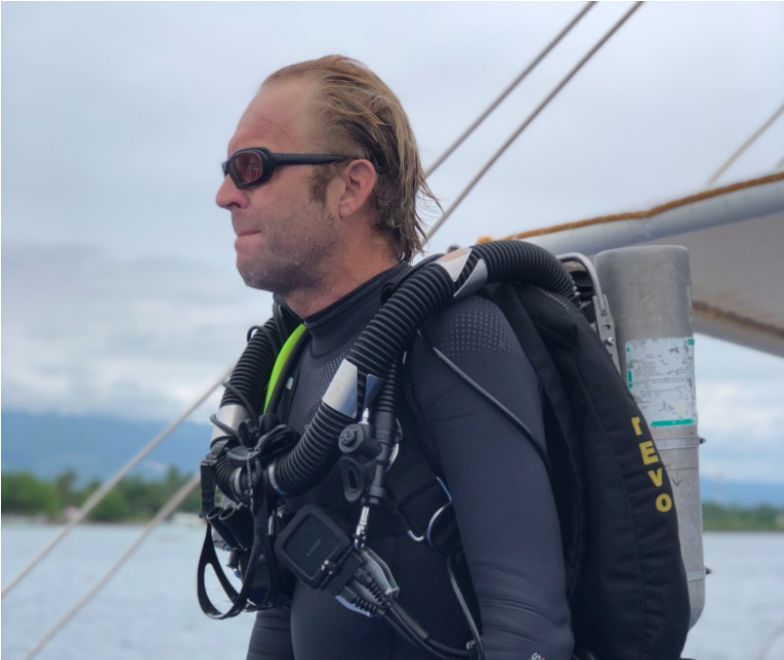Azoth Systems is the technical partner of the scientific exploration mission led by Alexis Chappuis and Marc Crane of Unseen Expeditions, in Indonesia, around Bali. This mission, in which Universitas Udayana and the Institut Français d’Indonésie also took part, is supported by Blancpain Ocean Commitment.
Photo credits © Alexis Chappuis/UNSEEN Expeditions
Mesophotic Coral Ecosystems are coral habitats found between 30 and 150 or even 200 meters in tropical and sub-tropical regions. Due to the difficulty for divers to reach such depths, these ecosystems are poorly studied worldwide and a particularly important knowledge gap exists in Indonesia and other South-East Asian countries. These ecosystems can play a critical role in coral reef resilience, potentially providing refuge for some species at threat from human pressure in shallower waters. They also host their own unique range of endemic species. Therefore, like the better-known shallower coral reefs, they should also be considered when it comes to ocean conservation.
In the Bali region Mesophotic Coral Ecosystems offer cleaning opportunities to a wide range of species, notably to the emblematic Bumphead sunfish, Mola alexandrini. M. alexandrini is the heaviest species of bony fish roaming our Oceans, but curiously nothing much is known about its behaviour. In the eastern part of Bali, Indonesia, Bumphead sunfish seem to gather on the shallow coral reefs in specific regions, seeking interactions with cleaner fish for removal of skin parasites. But how about the deep cleaning stations? Are they effective alternative to the shallow, heavily dived reefs? What are the differences between the two?
In an effort to contribute in answering these questions, Blancpain supported an international team of scientific deep divers working in close collaboration with local scientists from Udayana University. Three groups were working together: an oceanography team collecting oceanographic data such as temperature, salinity, etc., a shallow dive team surveying the depth range from the surface to 30 metres, and a deep team surveying anything below 40 metres and down to depths of 80 to 110 metres depending on the site. The two dive teams were recording any encounter with the fish species involved in M. alexandrini cleaning events, as well as all information related to the surrounding environment and any special sighting such as dolphins and sharks.
Data still needs to be analysed in detail, but preliminary analysis seems to indicate that the Nusa Penida area presents very sudden changes in water parameters over short periods, even on the deeper part of the reef. This, together with the daily strong currents, influences local biodiversity. Regarding the cleaning events, the main difference between shallow and deep reefs appears to be in the abundance and diversity of the cleaner fish species. Deeper cleaning areas (below 60 metres) seem to only host the Longfin bannerfish, Heniochus acuminatus, when shallower ones display up to five different cleaner fish species. Finally, some potential new species unknown to science so far as they are probably endemic to great depths, have been photographed.
The quality of decompression of Alexis and Marc was followed throughout the mission with O’Dive. Nearly 40 deep dives (up to 108m) were analyzed in terms of severity and level of microbubbles. The use of O’Dive allowed the two explorers to better master their decompression procedures.


Alexis Chappuis
Alexis is a French marine biologist, technical scientific diver and amateur photographer. He has conducted various marine ecological studies worldwide during his career, logging hours on and under the sea. After spending more than 4 years living and working in Indonesia for an environmental consulting company, he founded the French-based non-profit organisation UNSEEN (“Underwater Scientific Exploration for Education”) in 2018.
He now uses close-circuit rebreathers for the exploration and study of poorly-known underwater ecosystems, particularly Mesophotic Coral Ecosystems (MCEs), up to a depth of 120 metres.
Marc Crane
Marc started diving in 1991 in his home town on the English south coast, and since then has dived world wide. An avid deep reef and wreck diver he has worked and dives in the Egyptian Red Sea, Mexico, Mediterranean, Australia, East Africa and is currently located in Bali, Indonesia, where he heads up the Tekdeep Team in Asia.
Marc is an O’Dive Instructor Trainer, so don’t hesitate to contact him if you wish to test the O’Dive technology!



